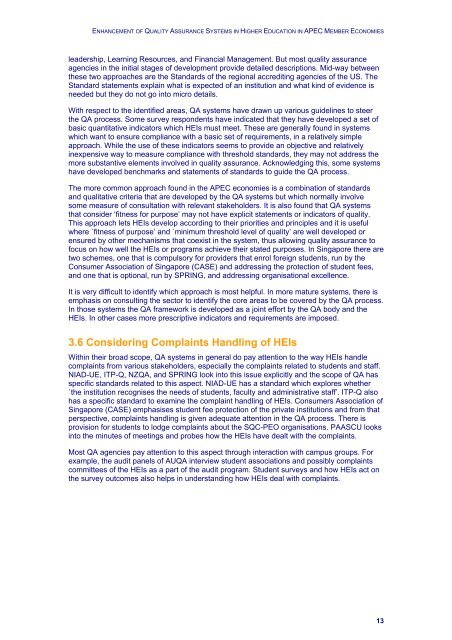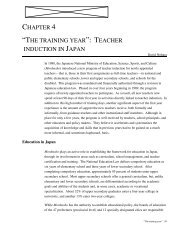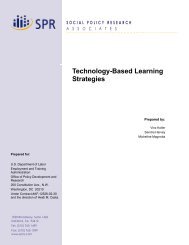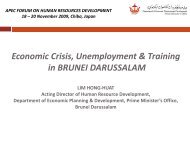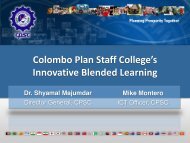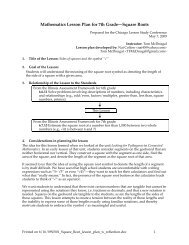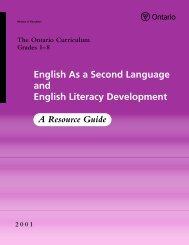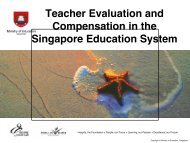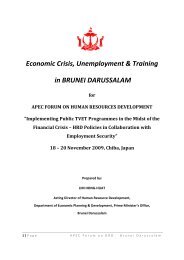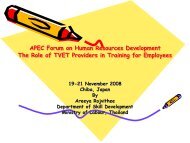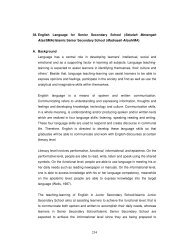Quality Assurance Systems in Asia-Pacific Economic Cooperation
Quality Assurance Systems in Asia-Pacific Economic Cooperation
Quality Assurance Systems in Asia-Pacific Economic Cooperation
Create successful ePaper yourself
Turn your PDF publications into a flip-book with our unique Google optimized e-Paper software.
ENHANCEMENT OF QUALITY ASSURANCE SYSTEMS IN HIGHER EDUCATION IN APEC MEMBER ECONOMIES<br />
leadership, Learn<strong>in</strong>g Resources, and F<strong>in</strong>ancial Management. But most quality assurance<br />
agencies <strong>in</strong> the <strong>in</strong>itial stages of development provide detailed descriptions. Mid-way between<br />
these two approaches are the Standards of the regional accredit<strong>in</strong>g agencies of the US. The<br />
Standard statements expla<strong>in</strong> what is expected of an <strong>in</strong>stitution and what k<strong>in</strong>d of evidence is<br />
needed but they do not go <strong>in</strong>to micro details.<br />
With respect to the identified areas, QA systems have drawn up various guidel<strong>in</strong>es to steer<br />
the QA process. Some survey respondents have <strong>in</strong>dicated that they have developed a set of<br />
basic quantitative <strong>in</strong>dicators which HEIs must meet. These are generally found <strong>in</strong> systems<br />
which want to ensure compliance with a basic set of requirements, <strong>in</strong> a relatively simple<br />
approach. While the use of these <strong>in</strong>dicators seems to provide an objective and relatively<br />
<strong>in</strong>expensive way to measure compliance with threshold standards, they may not address the<br />
more substantive elements <strong>in</strong>volved <strong>in</strong> quality assurance. Acknowledg<strong>in</strong>g this, some systems<br />
have developed benchmarks and statements of standards to guide the QA process.<br />
The more common approach found <strong>in</strong> the APEC economies is a comb<strong>in</strong>ation of standards<br />
and qualitative criteria that are developed by the QA systems but which normally <strong>in</strong>volve<br />
some measure of consultation with relevant stakeholders. It is also found that QA systems<br />
that consider ‘fitness for purpose’ may not have explicit statements or <strong>in</strong>dicators of quality.<br />
This approach lets HEIs develop accord<strong>in</strong>g to their priorities and pr<strong>in</strong>ciples and it is useful<br />
where `fitness of purpose’ and `m<strong>in</strong>imum threshold level of quality’ are well developed or<br />
ensured by other mechanisms that coexist <strong>in</strong> the system, thus allow<strong>in</strong>g quality assurance to<br />
focus on how well the HEIs or programs achieve their stated purposes. In S<strong>in</strong>gapore there are<br />
two schemes, one that is compulsory for providers that enrol foreign students, run by the<br />
Consumer Association of S<strong>in</strong>gapore (CASE) and address<strong>in</strong>g the protection of student fees,<br />
and one that is optional, run by SPRING, and address<strong>in</strong>g organisational excellence.<br />
It is very difficult to identify which approach is most helpful. In more mature systems, there is<br />
emphasis on consult<strong>in</strong>g the sector to identify the core areas to be covered by the QA process.<br />
In those systems the QA framework is developed as a jo<strong>in</strong>t effort by the QA body and the<br />
HEIs. In other cases more prescriptive <strong>in</strong>dicators and requirements are imposed.<br />
3.6 Consider<strong>in</strong>g Compla<strong>in</strong>ts Handl<strong>in</strong>g of HEIs<br />
With<strong>in</strong> their broad scope, QA systems <strong>in</strong> general do pay attention to the way HEIs handle<br />
compla<strong>in</strong>ts from various stakeholders, especially the compla<strong>in</strong>ts related to students and staff.<br />
NIAD-UE, ITP-Q, NZQA, and SPRING look <strong>in</strong>to this issue explicitly and the scope of QA has<br />
specific standards related to this aspect. NIAD-UE has a standard which explores whether<br />
`the <strong>in</strong>stitution recognises the needs of students, faculty and adm<strong>in</strong>istrative staff’. ITP-Q also<br />
has a specific standard to exam<strong>in</strong>e the compla<strong>in</strong>t handl<strong>in</strong>g of HEIs. Consumers Association of<br />
S<strong>in</strong>gapore (CASE) emphasises student fee protection of the private <strong>in</strong>stitutions and from that<br />
perspective, compla<strong>in</strong>ts handl<strong>in</strong>g is given adequate attention <strong>in</strong> the QA process. There is<br />
provision for students to lodge compla<strong>in</strong>ts about the SQC-PEO organisations. PAASCU looks<br />
<strong>in</strong>to the m<strong>in</strong>utes of meet<strong>in</strong>gs and probes how the HEIs have dealt with the compla<strong>in</strong>ts.<br />
Most QA agencies pay attention to this aspect through <strong>in</strong>teraction with campus groups. For<br />
example, the audit panels of AUQA <strong>in</strong>terview student associations and possibly compla<strong>in</strong>ts<br />
committees of the HEIs as a part of the audit program. Student surveys and how HEIs act on<br />
the survey outcomes also helps <strong>in</strong> understand<strong>in</strong>g how HEIs deal with compla<strong>in</strong>ts.<br />
13


